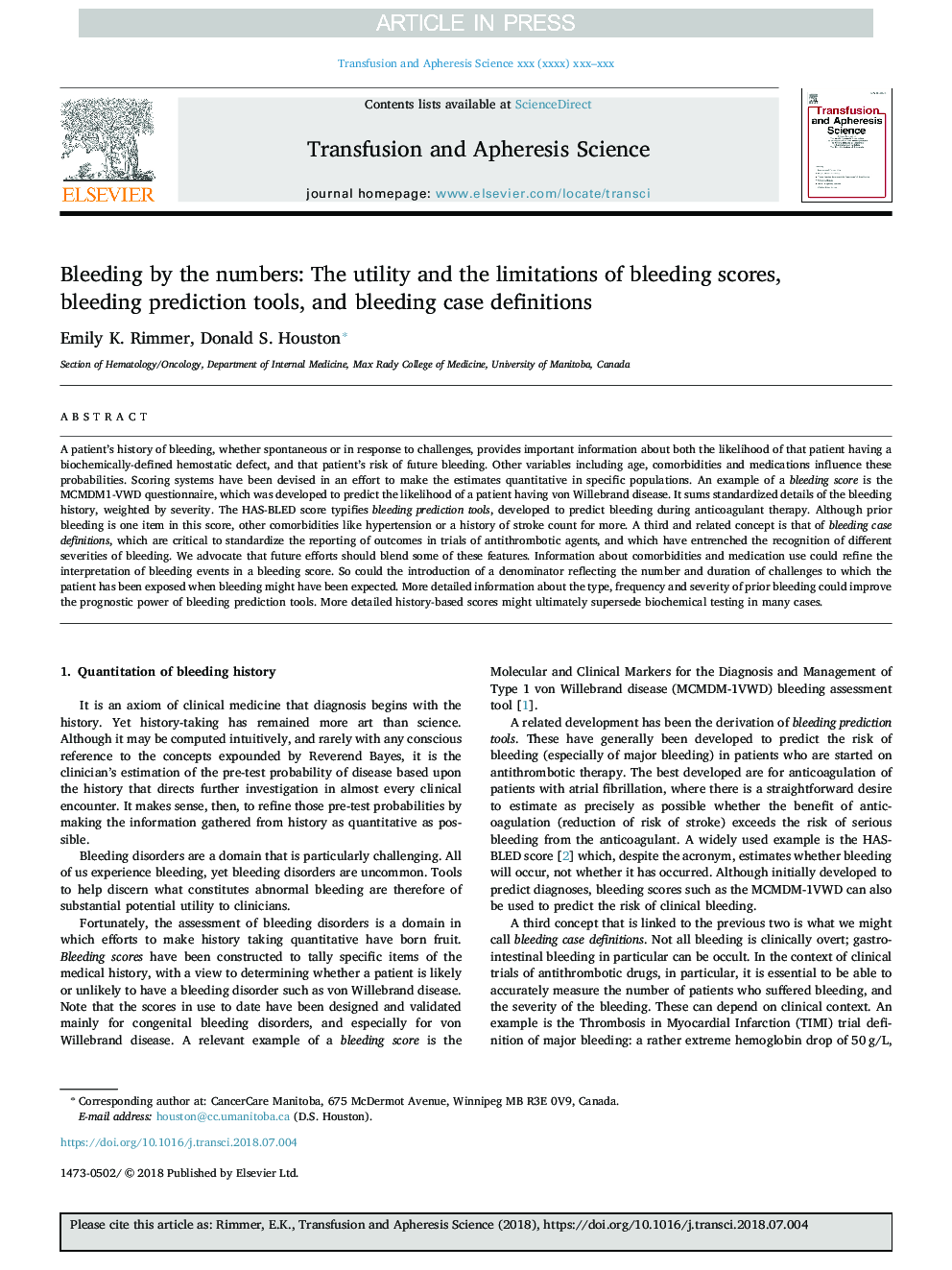| کد مقاله | کد نشریه | سال انتشار | مقاله انگلیسی | نسخه تمام متن |
|---|---|---|---|---|
| 10218340 | 1687148 | 2018 | 5 صفحه PDF | دانلود رایگان |
عنوان انگلیسی مقاله ISI
Bleeding by the numbers: The utility and the limitations of bleeding scores, bleeding prediction tools, and bleeding case definitions
ترجمه فارسی عنوان
خونریزی توسط عدد: ابزار و محدودیت های خونریزی نمرات، ابزار پیش بینی خونریزی و تعاریف موارد خونریزی
دانلود مقاله + سفارش ترجمه
دانلود مقاله ISI انگلیسی
رایگان برای ایرانیان
موضوعات مرتبط
علوم پزشکی و سلامت
پزشکی و دندانپزشکی
هماتولوژی
چکیده انگلیسی
A patient's history of bleeding, whether spontaneous or in response to challenges, provides important information about both the likelihood of that patient having a biochemically-defined hemostatic defect, and that patient's risk of future bleeding. Other variables including age, comorbidities and medications influence these probabilities. Scoring systems have been devised in an effort to make the estimates quantitative in specific populations. An example of a bleeding score is the MCMDM1-VWD questionnaire, which was developed to predict the likelihood of a patient having von Willebrand disease. It sums standardized details of the bleeding history, weighted by severity. The HAS-BLED score typifies bleeding prediction tools, developed to predict bleeding during anticoagulant therapy. Although prior bleeding is one item in this score, other comorbidities like hypertension or a history of stroke count for more. A third and related concept is that of bleeding case definitions, which are critical to standardize the reporting of outcomes in trials of antithrombotic agents, and which have entrenched the recognition of different severities of bleeding. We advocate that future efforts should blend some of these features. Information about comorbidities and medication use could refine the interpretation of bleeding events in a bleeding score. So could the introduction of a denominator reflecting the number and duration of challenges to which the patient has been exposed when bleeding might have been expected. More detailed information about the type, frequency and severity of prior bleeding could improve the prognostic power of bleeding prediction tools. More detailed history-based scores might ultimately supersede biochemical testing in many cases.
ناشر
Database: Elsevier - ScienceDirect (ساینس دایرکت)
Journal: Transfusion and Apheresis Science - Volume 57, Issue 4, August 2018, Pages 458-462
Journal: Transfusion and Apheresis Science - Volume 57, Issue 4, August 2018, Pages 458-462
نویسندگان
Emily K. Rimmer, Donald S. Houston,
